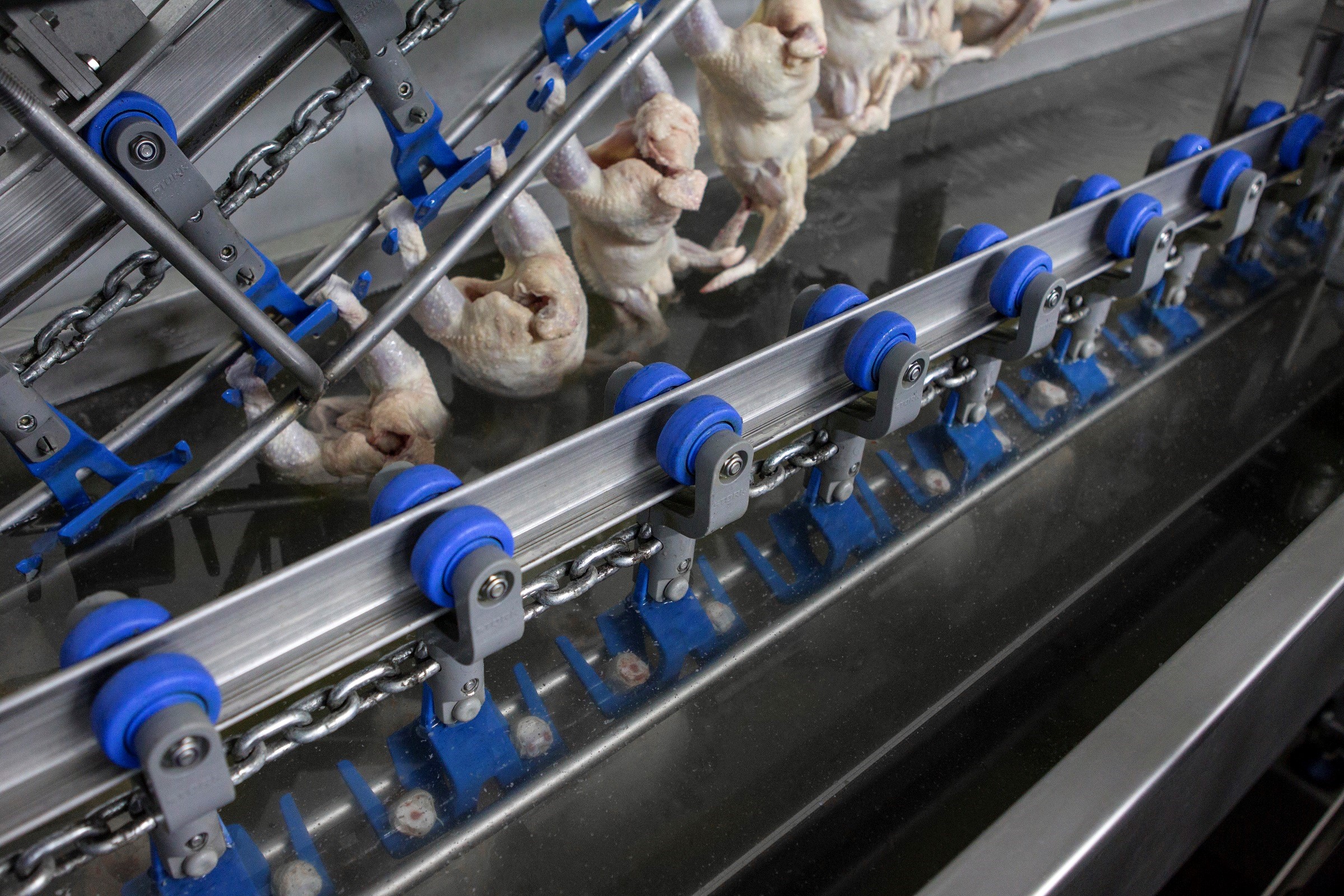Core temperature
As you will be looking for a guarantee as regards the chilling performance of the system, it is important to be precise about where the temperature is measured. Marel has opted for core temperature, the warmest spot in the breast muscle. Some suppliers guarantee an “average” temperature, which is altogether different, as it includes surfaces, which cool down much more quickly. The laws of physics will determine how long it takes to chill products to the temperature required with heavier products needing more time than lighter ones.
Local legislation also plays a role, as it will influence the chilling method chosen. In the European Union, for example, if a product is to be sold fresh, it must be chilled using air. Products that are immersion chilled in water, however, cannot be sold fresh.
From hydrophobic to hydrophilic
If no countermeasures are taken, up to 3% yield can be lost when chilling with air. This is because dry skin is hydrophobic, meaning that it doesn’t like water. Marel overcomes this phenomenon by spraying a thin film of moisture onto interior and exterior surfaces during chilling, making these surfaces hydrophilic (attract water). This film should remain intact for most of the process with any water evaporating from the film rather than the product itself. This reduces yield loss typically to half a percent. Shelf-life considerations, however, dictate that products coming out of the chilling installation be as dry as possible. Bacteria thrive in water and live only on the skin, the underlying meat being sterile. Spraying should, therefore, stop in good time.







